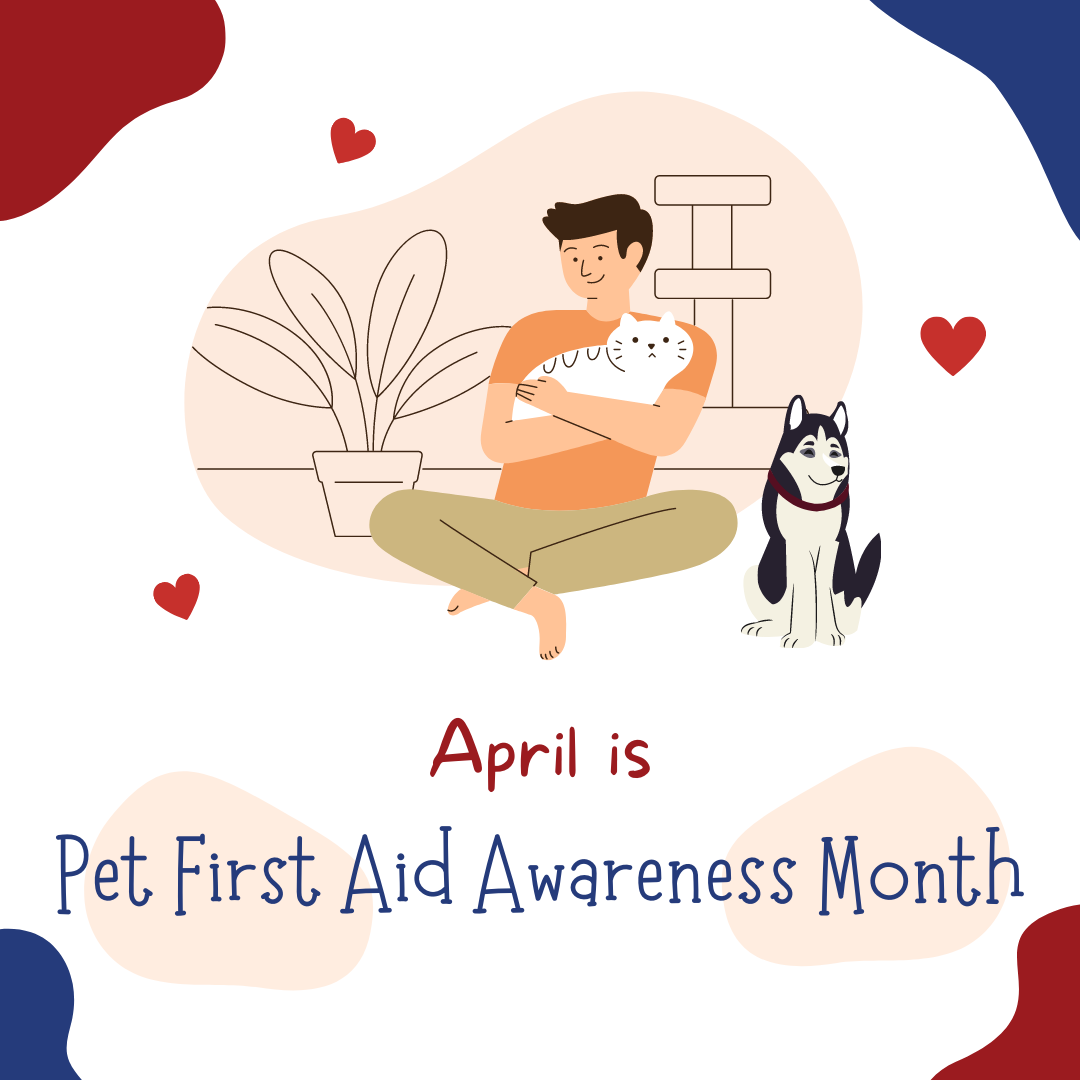Having a furry friend is a lot of fun! But there is also a responsibility to plan for their health. In addition to taking your pets’ in for their annual wellness checks, make sure you have a plan for first aid in the event of an emergency. Remember that injured or sick pets should always be seen by a veterinarian; first aid is not meant as a substitution. Here are answers to some common pet first aid questions:
What should be in my first aid kit?
Many kits are sold online or in pet stores. You may consider asking your veterinarian for a suggestion. However, most kits should contain: gauze, sterile pads, medical tape, a thermometer, muzzle, leash, tweezers, scissors, and hydrogen peroxides.
Your kit should also include the number of your primary veterinarian, the closest emergency veterinary hospital, and the number of animal poison control (888.426.4435). Additionally, you should keep all of your pets medical records in an easy access location.
How do I handle an injured pet?
Contact a veterinarian immediately if your pet is injured. If you need to move the pet, be careful. Touching, petting, or comforting them may be your first instinct, but many injured pets will bite. If needed, and the pet is not vomiting, put on a muzzle. When transporting injured pets, keep them to a small, confined space to reduce the chance they will injure themselves further. If you can, apply pressure to open wounds or try to stabilize injuries.
What are the basic steps?
- Contact a veterinarian or the animal poison control hotline
- Follow their instructions to stabilize your pet
- If your pet has interacted with or consumed a harmful product, have the package or container available for reference. Know how much and how long it has been since they were exposed.
- If your pet has eaten a food, try to find out how much the pet ate, how long it has been since eating it.
- Tell your veterinarian the symptoms your pet is experiencing
- Take any materials that your pet may have consumed with you to the vet.
- If your pet is experiencing heat stroke, do not expose them to cold water or ice. Instead apply a cool cloth to their skin and give limited access to cool water.
Should I have an emergency plan?
It is important to always be prepared to care for your pet. Make sure you have a plan and that your family and/or pet sitters are aware of it. Make sure they know where to locate vet records and the pet first aid kit.
Put identification tags on your pets and/or make sure they are microchipped in case you are separated during an emergency situation. You may also want to put a sticker or notice on your door to inform emergency responders what pets you have in the home.
Source: https://www.avma.org/resources/pet-owners/emergencycare/first-aid-tips-pet-owners

